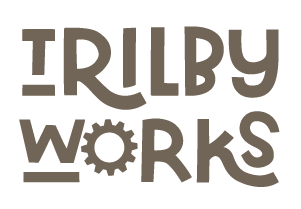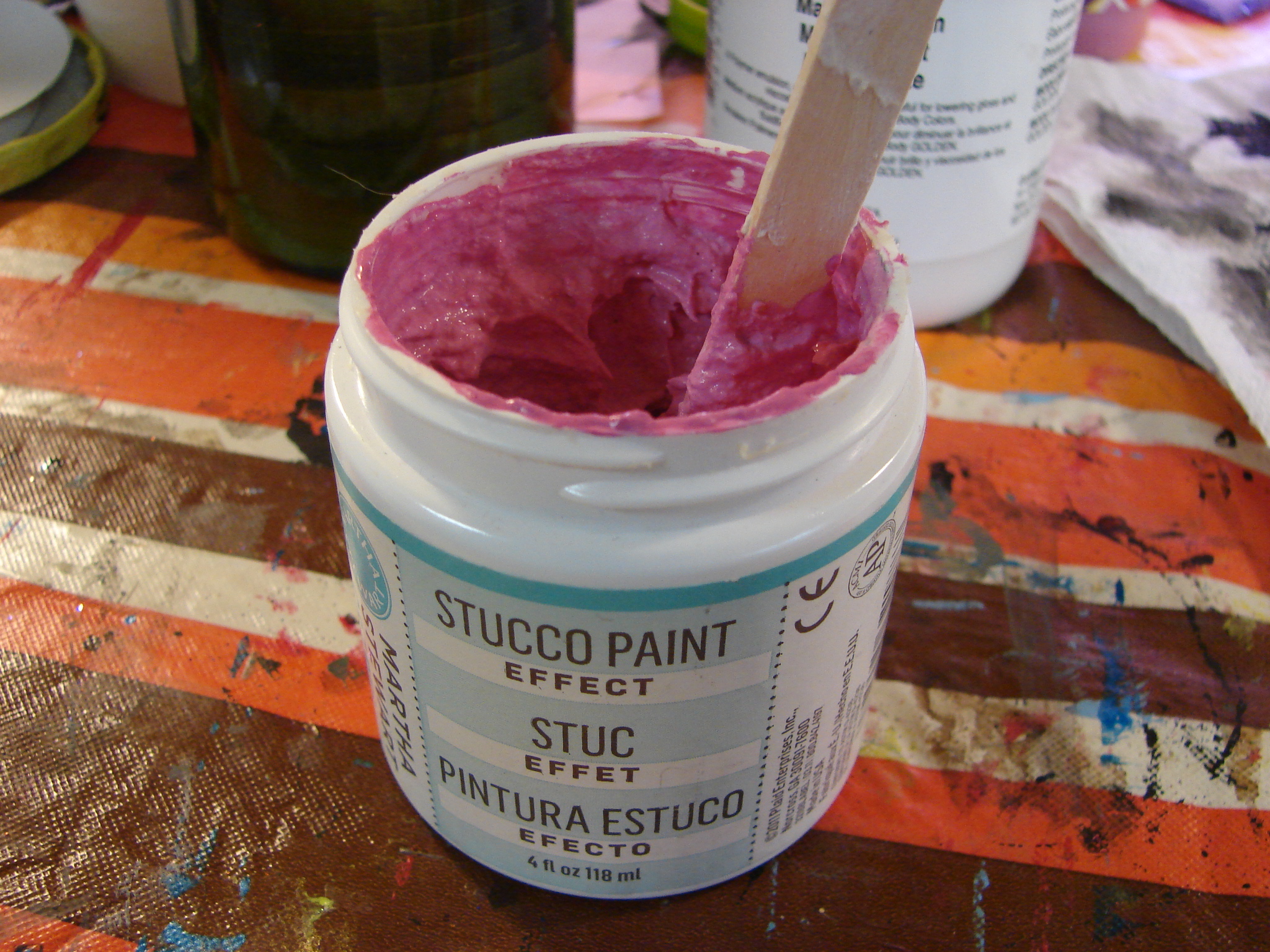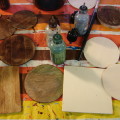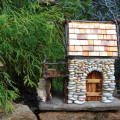I go to Michael’s craft store quite often and I’ve learned to shop the endcaps and side walls where the clearance items are. I’ve scored some cool stuff this way, at discount prices. One of my finds is this Martha Stewart Stucco Paint.
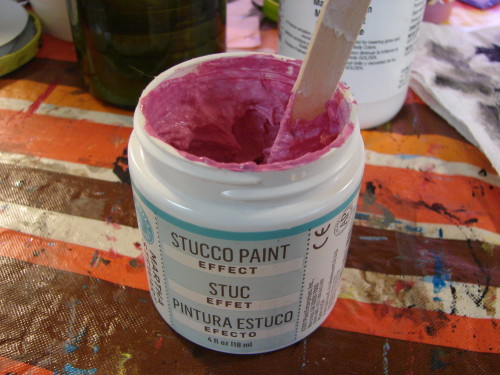
It’s an acrylic paint with a white color (I added pink paint to mine) and a rough texture, supposedly simulating a stucco surface. I don’t really think that it gives much of a stuccoed look but I do like the texture. After experimenting with a bunch of surfaces, I’m ready to share my results.
Easy to work with, the paint can be mixed with acrylic paint or used alone and painted after drying. It comes in a 4-ounce jar and mine cost $3.49 on sale at Michael’s. I thought this was still a little pricey for such a small jar so I waited until I received a “25% off sale prices” coupon, which brought my total down to a more reasonable amount. I think the standard retail price is $5 something. The paint is water-based and cleans up quickly and easily. The consistency reminds me of a very stiff, crunchy, peanut butter, with a creamy base and a bunch of grit thrown in. You can slap it on your project with a palette knife or use a brush to apply it.
I painted some on a recycled plastic creamer container:
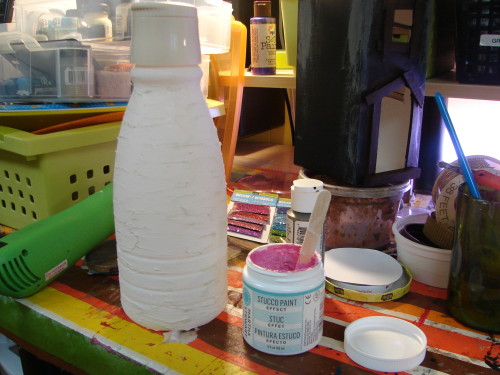
After this first layer of paint, I decided to mix in some pink acrylic. The stucco paint became a little looser and the pink color was somewhat diluted. I gave the container several more coats, gooping it on fairly thickly and using a horizontal application pattern. It still wasn’t pink enough, so I gave it a coat of straight paint. Here’s what it looked like at that point:
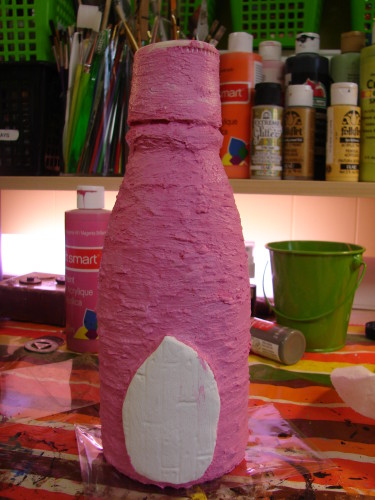
I was pretty happy with my results. I finished up my project, dubbed it the “Butterfly Pixie House” and then went on to use the paint on all sorts of other fairy houses, pictures of which I share with you below.
[pictures coming soon…]
Below are some guidelines I learned while working with this paint.
Tips To Using Martha Stewart Stucco Paint
- You may need several coats to achieve the desired texture.
- Thicker applications of the paint will take longer to dry.
- You may mix this paint with any other acrylic medium or paint.
- You can control the grain of the texture by dragging a brush or palette knife through it.
- If you paint onto plastic or a smooth surface, rough it up first with sandpaper and then apply a primer.
Enjoy this fun paint! If you make something wonderful and would like to share, please leave a link to your project in the comments below.
